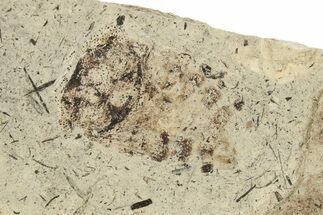This Specimen has been sold.
22" Spectacular Fossil Sand Dollar Cluster With Whale Bone
This is a truly spectacular specimen with 16 fossil sand dollars of the species Amphiope bioculata. It was collected in the D'Angers Region of France and is Early Miocene in age. The sand dollars average around 3 inches in diameter and the entire piece is 22" tall and up to 14" wide. It displays very well either, standing up or laying down down.
It is a natural association, and it has been wonderfully prepared. There are also three pieces of fossilized whale bone (black color) which are also associated with the sand dollars. One really cool aspect is one of the bones also has fossilized barnacles preserved on it!
Price includes free UPS ground shipping within the United States. For International orders shipping will be billed separately after purchase. Please contact us for a shipping quote if you are an International purchaser.
It is a natural association, and it has been wonderfully prepared. There are also three pieces of fossilized whale bone (black color) which are also associated with the sand dollars. One really cool aspect is one of the bones also has fossilized barnacles preserved on it!
Price includes free UPS ground shipping within the United States. For International orders shipping will be billed separately after purchase. Please contact us for a shipping quote if you are an International purchaser.
A sand dollar is a highly flattened form of urchin of the order Clypeasteroida. As an echinoderm, they have a pentameral (five-fold) symmetry to their body organization, a water vascular system, and an endoskeleton made of calcite plates. They live in shallow marine environments just below the low tide line, buried in the sand or mud. They range up to about 4 inches (10cm) in diameter. Most are about a third (7mm) to half (12mm) an inch thick, but some are over an inch thick. They are basically circular in shape, though some have flattened or indented sides. While alive, they are covered with velvety-looking spines that they use to move, much like other echinoderms. The most diagnostic indicator of fossil sand dollars is the five ovate form on the top side of the skeleton. These are part of the respiratory system and leave an easily identified “flower” on the skeleton. They are active predators, feeding on crustacean larvae, small copepods, diatoms, and algae.
Sand dollars first appeared in the Paleocene, about 60 million years ago. By the middle Eocene, they had populated every ocean. As an order, sand dollars are still robust today: 49 genera of sand dollars are extinct, but 29 are still living.
Sand dollars first appeared in the Paleocene, about 60 million years ago. By the middle Eocene, they had populated every ocean. As an order, sand dollars are still robust today: 49 genera of sand dollars are extinct, but 29 are still living.
SPECIES
Scutella faujasii
LOCATION
D'Angers Region, France
SIZE
22" Tall, 14" wide, sand dollars average 3"
CATEGORY
SUB CATEGORY
ITEM
#22841
We guarantee the authenticity of all of our specimens.
 Reviews
Reviews

















